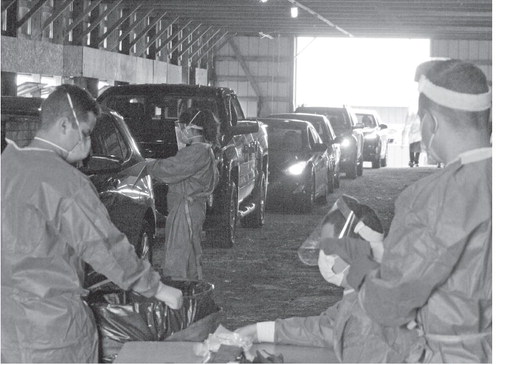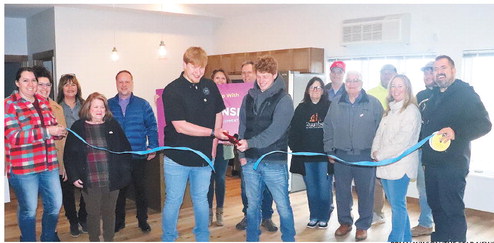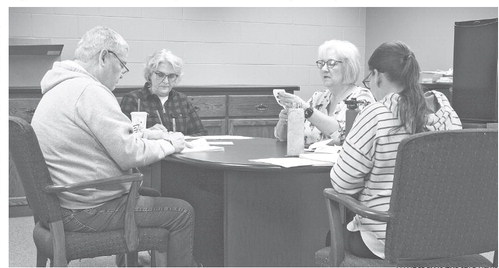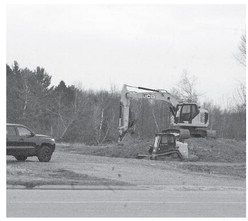Wisconsin National Guard rising to the occasion in unprecedented and historic year of serving local communities, Wisconsin, and the nation


In a year unlike any other in the long and storied history of the Wisconsin National Guard, the two central tenets that form the bedrock principles of the Guard’s mission – service to Wisconsin and the nation – have been on full display.
But for an organization whose origins date back to the 1830s before Wisconsin even achieved statehood, 2020 holds the unique distinction of marking the largest sustained domestic mobilization in the Wisconsin National Guard’s proud history.
That history includes service in the Civil War when tens of thousands of Wisconsinites volunteered to defend the Union in Wisconsin units at places like Bull Run, Antietam, and Gettysburg. It also includes the thousands of Soldiers who mustered into federal service with the now famous 32nd “Red Arrow” Division during the First World War, where it earned a reputation for its ferocity in combat on the battlefields of France.
Just over 20 years later, the same organization would once again serve with distinction in the Pacific Theater during World War II, where it spent 654 days in combat – more than any other division in the war – as it fought its way through New Guinea and the Philippines.
After mobilizing during the Berlin Crisis in the early 1960s, the Wisconsin Guard took on many domestic support missions to support the people of Wisconsin in the wake of natural disasters and emergencies. Violent protests during the 1960s and 1970s also prompted several Wisconsin National Guard mobilizations where thousands of troops mobilized to help keep the peace in Wisconsin cities.
After the terror attacks of September 11, 2001, the Wisconsin Army and Air National Guard entered a new era, as tens of thousands of Citizen Soldiers and Airmen mobilized and deployed overseas to places like Iraq and Afghanistan.
The organization simultaneously served as the state’s military response force during floods, tornadoes, blizzards, train derailments, and other emergencies, and even deployed to other states to support hurricane relief efforts on multiple occasions over the past few decades.
But even amidst that backdrop, 2020 is one for the history books. Never in the Wisconsin Guard’s history has it responded here at home within Wisconsin’s borders on such a large, sustained scale.
“Never before has the state relied so heavily on the Wisconsin National Guard to be ‘Always Ready, and Always There,’” said Maj. Gen. Paul Knapp, Wisconsin’s adjutant general. “Our troops have shown their adaptability, their professionalism, and their dedication to serving their communities, state, and nation in 2020, which we like to call the ‘Year of the Guard.’ I’m so proud of the service and sacrifice of all of our Soldiers and Airmen for continually answering the call during this trying time – no matter the mission.”
The Wisconsin National Guard’s commander-inchief, Gov. Tony Evers had similar praise.
“I can’t thank our Citizen Soldiers and Airmen enough for all they’ve done and continue to do for Wisconsin during this unprecedented stretch,” he said. “Many have put college or employment plans on hold, and all have sacrificed personal and family time to help Wisconsin in a time of great need.”
COVID-19 Response
At the peak of the Wisconsin Guard’s response in the initial months of the COVID-19 pandemic response, more than 1,400 Citizen Soldiers and Airmen from the Wisconsin National Guard were serving in direct support roles. To date, more than 1,600 troops have mobilized at some point this year to support the COVID response. They fulfilled a variety of needs across Wisconsin.
A team of 20 Soldiers and Airmen assisted at a state warehouse where they received personal protective equipment shipments, repackaged them, and distributed them around the state.
Other personnel staffed self-isolation facilities in Madison and Milwaukee where Soldiers and Airmen provided medical and administrative support. Another team of mortuary affairs specialists augmented a medical examiner’s office, while others helped with initial setup and warehousing at an alternate care facility at Wisconsin State Fair Park.
In another instance in late March, Wisconsin National Guard medics helped staff a senior living facility in Grafton for three days when a COVID-19 outbreak at the facility resulted in a critical staffing shortage.
The first Wisconsin National Guard members mobilized to state active duty March 12 – the same day Gov. Tony Evers declared a public health emergency in the state. Their first mission was to help transport a group of cruise ship passengers exposed to COVID-19 back to their homes across Wisconsin.
In the ensuing weeks, the Guard began training and organizing teams to conduct mobile COVID-19 testing for any community that requested it. Those teams developed a blueprint and refined their processes for what would eventually become the Wisconsin National Guard’s primary mission as the need for mass community testing grew in the ensuing months.
The first community testing sites became operational in April, and by May, the Wisconsin Guard had teams supporting testing sites statewide. Now – some seven months later, the Guard’s Citizen Soldiers and Airmen have administered nearly 900,000 COVID-19 tests in nearly every Wisconsin county.
As part of the testing effort, the National Guard helped staff a state call center to take some of the burden off local health departments to call and follow up with test results. To date – the Guard’s call center has placed more than 520,000 calls to inform people of their COVID-19 test results.
Along the way, the Guard has worked closely with partner agencies like the Wisconsin Department of Health Services to increase testing efficiency and expand access to testing. Over the summer, the state rolled out new technology that allowed people to pre-register for a COVID-19 test, which generated a QR code that Guard members could scan upon arrival at the testing site to ensure data accuracy and faster follow-up with test results via e-mail instead of a phone call.
While demand for testing continued to skyrocket, thanks to refined processes and the new technology, testing sites grew more efficient and their ability to process mass numbers of people increased.
As a result, the Guard this fall broke their teams – originally upwards of 25-30 Guard members – into squads of 10 or fewer personnel to allow more net testing statewide with a more regionally focused model. As part of that shift, enduring testing sites at places like the Alliant Energy Center in Madison and Miller Park in Milwaukee – where Citizen Soldiers and Airmen have each administered thousands of tests daily for months on end – are now in the midst of a deliberate transition to civilian staffing that will be complete in the coming weeks. Guard members began training civilian staff to replace them in October as the transition began, which has allowed the Guard to devote additional resources to expand testing opportunities statewide.
The shift has resulted in an increase in testing capacity and availability across Wisconsin, as well as predictable, repeatable testing dates for communities in every region across the state.
In recent weeks, the Wisconsin National Guard has regularly topped 50,000 weekly tests, and is fast approaching the million-test mark.
The Guard’s mobilization for the COVID-19 response represents the largest sustained domestic mobilization in the organization’s history. That alone would have made 2020 a historic year in the annals of Wisconsin history. But what’s made 2020 truly unprecedented are all of the other missions the Wisconsin National Guard has simultaneously undertaken.
Pfc. Kristin Klavunde, of Sturtevant, Wisconsin, and a chemical specialist with the 457th Chemical Company, put her service during this unprecedented time in perspective.
“I’m truly honored to be a part of something so big,” she said. “Everyone always says they want to be a part of something bigger than themselves, and that’s exactly what we’re doing here. It’s so important to be a part of the team and to be out here doing this day in and day out. Everyone’s got family back home and has sacrifices they’re making, but when we’re out here as a team, this is our family. And to be able to be out here in the communities that we’re from and supporting the people just like us – it means a lot.”
Klavunde served on one of the Wisconsin National Guard’s original COVID-19 testing teams in the spring.
“This is exactly what I signed up for,” she added. “It is hard to be away from home, but that’s why we’re the one percent. We stood up and we took this oath and it’s really important when our leaders come out and re- mind us and we remind each other that what we’re doing is really important and look at the bigger picture. One day our kids and grandkids are going to be reading about this in text books – the world pandemic coronavirus 2020, and to know that we were on the front lines that’s really something all of us can be proud of.”
Indeed, future generations will read about 2020 in their textbooks in the coming years.
Election Support
Related to the COVID-19 response, the Wisconsin National Guard mobilized to support the Wisconsin Elections Commission as poll workers in four separate elections since the pandemic began. More than 2,500 troops mobilized and performed the same functions as traditional poll workers across 71 of Wisconsin’s 72 counties during the April 7 statewide election as fears about COVID-19 resulted in a critical shortage of volunteers to work the polls. Another 160 answered the call again May 12 during a special election in Wisconsin’s 7th Congressional District. During the Aug. 11 primary, nearly 700 more performed the same duties, and again during the November 3 election, another 450 mobilized to support 53 counties.
But that’s just the beginning.
Civil Unrest Response
In late May, nationwide demonstrations over the death of George Floyd in Minneapolis led to civil unrest in several Wisconsin cities. The state once again called on the Wisconsin National Guard to help preserve public safety and ensure that individuals had the right to exercise their First Amendment rights to peacefully demonstrate. More than 1,200 Citizen Soldiers and Airmen answered the call and supported authorities in Milwaukee, Madison, Green Bay, Racine, and Kenosha.
Less than a month later, violent protests at the state capitol in Madison prompted local officials to request Guard assistance again and 150 Guard members assisted in preserving public safety there.
Then in late August, an officer-involved shooting in Kenosha sparked mass demonstrations and civil unrest in the southeastern Wisconsin city. Gov. Tony Evers mobilized the Guard in the hours following the shooting and by week’s end more than 1,200 Wisconsin Guard members were in Kenosha along with more than 750 fellow Guard members from Michigan, Alabama, and Arizona to help preserve public safety.
In October, a charging decision in another officer-involved shooting that had occurred earlier in the year in Wauwatosa prompted the mobilization of another 500 troops there. To date, more than 3,800 troops had served in response to civil unrest over the course of the year in Wisconsin.
California Wildfires
Despite the many unique missions and challenges facing the Guard in 2020 – the Wisconsin National Guard’s more traditional missions persisted as well. Even, as the organization mobilized on a historic scale here in Wisconsin, UH-60 Black Hawk helicopters and crews deployed to California to battle raging wildfi res for more than a month in California from mid-September through mid-October.
Overseas Deployments
And not to be forgotten, the past year was one of the heavier years in recent memory for the Wisconsin National Guard in terms of overseas deployments.
Not since 2009-10, when the entirety of the Wisconsin Army National Guard’s 32nd “Red Arrow” Infantry Brigade Combat Team – some 3,500 Soldiers – deployed to Iraq, had so many Wisconsin Guard members deployed overseas.
Since November 2019, more than 1,200 Wisconsin National Guard troops either deployed or returned from overseas – including the 2nd Battalion, 127th Infantry and the 1st Battalion, 128th Infantry, which both served in Afghanistan, and the 829th Engineer Company, which served in several nations across the Middle East and Afghanistan. The 924th Engineer Facilities Detachment also returned to the U.S. in early November after a 10-month mobilization to Kuwait, and dozens of Airmen from the Wisconsin Air National Guard deployed to locations across the globe.
The 32nd Infantry Brigade Combat Team Headquarters also returned to Wisconsin in August after nearly a year deployed to Ukraine where they served as the headquarters element for training advisors to the Ukrainian military.
Meanwhile, the 1967th Contracting Team remains deployed to the Horn of Africa, and aviators from Detachment 1, Company G, 2nd Battalion, 104th Aviation continue their medevac mission in the Middle East in support of Operations Spartan Shield and Inherent Resolve.
While the past 12 months has represented a historically heavy lift for the Wisconsin National Guard, individual Soldiers and Airmen have risen to the occasion time and again to serve their state and nation.
“It’s kind of the main reason I decided to enlist,” Staff Sgt. Alex King, a firefighter with the Madison-based 115th Fighter Wing, said. “Everything about the military is great – the travel, the benefits, getting to see everything, but the primary or the first reason I looked into it was I wanted to be able to serve in some capacity. I think everybody pictures going off to a country and fighting wars and what the military does, but this is just as equal to me being able to help your community. And it means more to be able to help at home versus off in a faraway place, so I really appreciate it, and I’m glad that I get the opportunity to help in this time.”
King, who first mobilized in April as part of the COVID-19 response, also graduated with his degree from the University of Wisconsin-Madison since his orders began. He’s continued serving on COVID-19 testing teams for months since.
Pfc. Wyatt Handschke, assigned to the Stevens Point-based Battery B, 1st Battalion, 120th Field Artillery, said he hopes the Guard’s efforts in 2020 show the state that the Guard is always ready to answer the call.
“I think it says that we’re a great resource for our state, and I think that it shows that we’ll just be able to keep supporting our community in more ways than just disaster relief,” Handschke, a resident of Freedom, Wisconsin, who’s also served on COVID-19 testing teams since mobilizing in April, said. “If any other situation arises in the future, I think that the people in this state will know to look toward the Guard seeing as we’re able to get the job done, and we’ve been doing it for the past couple of months.”
Handschke is currently studying business management at the University of Wisconsin-La Crosse, but has been on teams that have been conducting testing at sites in Milwaukee since he was mobilized.
Other fellow Soldiers and Airmen agreed and spoke of their desire to serve their communities.
“I enjoy and love helping out people,” explained Spc. Nina Kowalkowski, an information technology specialist assigned to Madison’s Headquarters Troop, 1st Squadron, 105th Cavalry. “So being able to do this has brought more fulfillment to me as a person. Just being there to help my community is the greatest thing in the world.”
Kowalkowski, who grew up in Stevens Point, but now lives in Sauk City, has also been on orders since April doing COVID-19 testing.
Spc. Dylan Heath, a Sturgeon Bay, Wisconsin native who serves as a combat engineer with Company A, 173rd Brigade Engineer Battalion said he valued being able to serve in Wisconsin communities, because he saw it as serving his own neighbors.
“Obviously, I didn’t think I’d be doing this (pandemic response) when I signed up, but helping people is what I thought about when I signed up,” he said.
Pvt. Adam Gertz, a Milwaukee resident and infantryman with Company C, 1st Battalion, 128th Infantry held a similar sentiment.
“It just feels good to be actually be doing what I signed up for helping the community and state,” he said at a testing site in Waukesha.
“I enlisted because I wanted to be able to help out as much as I could in the state and do something or even the whole country,” he added. “It just feels good to be able to do that, and I’m glad I signed up.”
Approximately 10,000 Citizen Soldiers and Airmen from communities all across Wisconsin comprise the Wisconsin National Guard. The vast majority of the entire force has mobilized in some capacity at some point this year, including nearly 3,000 who have mobilized at least twice this year for domestic responses. Some have mobilized as many as seven times in response to domestic support missions.
The past year illustrates why the Wisconsin National Guard is reliant on strong and supportive families, communities, employers, and universities, who remain understanding and flexible when duty calls.





